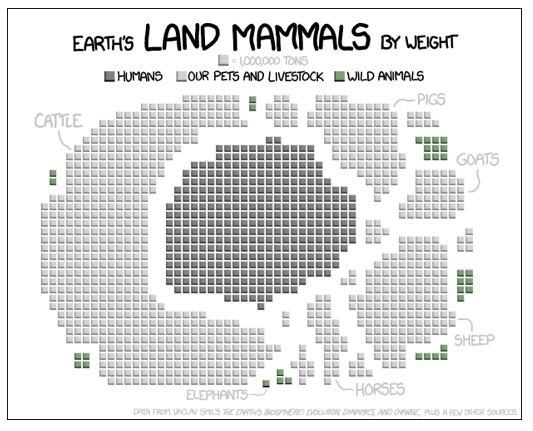
Handy Banking Quotes
March 18, 2014
The Benefits of “Pay-It-Forward”
March 20, 2014
From: xkcd
As most of us know, cow burps add to global warming. So too do the methane releases of sheep, goats and other ruminant animals.
In a recent opinion piece in Nature Climate Change, a group of researchers suggest we should be paying more attention to methane emissions because they are the second most prevalent greenhouse gas. And yet, the number of ruminant livestock has doubled during the past 50 years, approximately 25% of the Earth’s land is used for grazing, and we dedicate close to 33% of our arable land to livestock feed crops. Rather unrealistically I think, the authors of the study suggest we try to diminish demand for ruminant products. Instead though, as emerging markets grow more affluent, they are eating more meat.
Another solution? The kangaroo. Like cows, kangaroos are “foregut fermenters.” However, because their digestive system uses a different microbe, they produce harmless acetic acids instead of methane. If researchers could discover how to give cows the kangaroo microbe, then bovine emissions would be less harmful. And in fact, the Nature Climate Change commentary says that improved animal genetics are a possibility.
Sources: Knowing that the site is addictive, I still recommend going to xkcd for the above diagram. I actually began with the diagram (stayed at xkcd for almost an hour!) and then discovered facts about ruminants in a 2010 NY Times article and a Bloomberg column that led me to a press release describing the December 2013 Nature Climate Change commentary.
Part of my kangaroo comments came from a past econlife post.
![econlifelogotrademarkedwebsitelogo[1]](/wp-content/uploads/2024/05/econlifelogotrademarkedwebsitelogo1.png#100878)



